DP Robert Yeoman ASC used KODAK 35mm color/B&W film to deliver a striking result on Wes Anderson's 'Asteroid City'
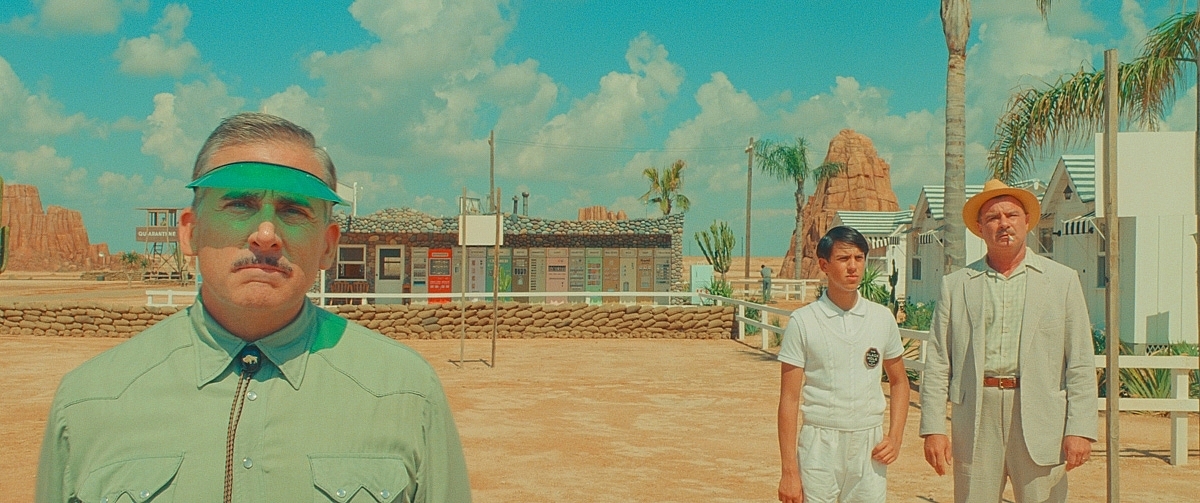
(L to R) Steve Carell and Liev Schreiber in writer/director Wes Anderson's ASTEROID CITY, a Focus Features release.
Anderson's wry sci-fi comedy, Asteroid City, earned a six-minute standing ovation after premiering in-competition at the 2023 Cannes Film Festival, plus rapturous praise from film critics worldwide for its enthralling, eccentric narrative and exhilarating visual appeal.
Set during the mid-1950s, framed as a story-within-a-stage-play in Anderson's hallmark cinematic style, the plot follows earth-shattering events that occur at an annual Junior Stargazer convention in the hot, dusty desert town of Asteroid City, famous for a gigantic meteor crater and nearby celestial observatory. Here, five award-winning students, accompanied by their parents, are gathered to display their scientific inventions, including a Death Ray, while mushroom clouds from atomic tests appear over yonder hills.
What starts as a celebration to honor the achievements of the Junior Stargazers turns into quite the opposite with the arrival of an unexpected visitor: an extra-terrestrial with important news about the universe. Asteroid City is locked down and while a fake cover story is concocted by the Army, the precocious geniuses have a plan to get word to the outside world.
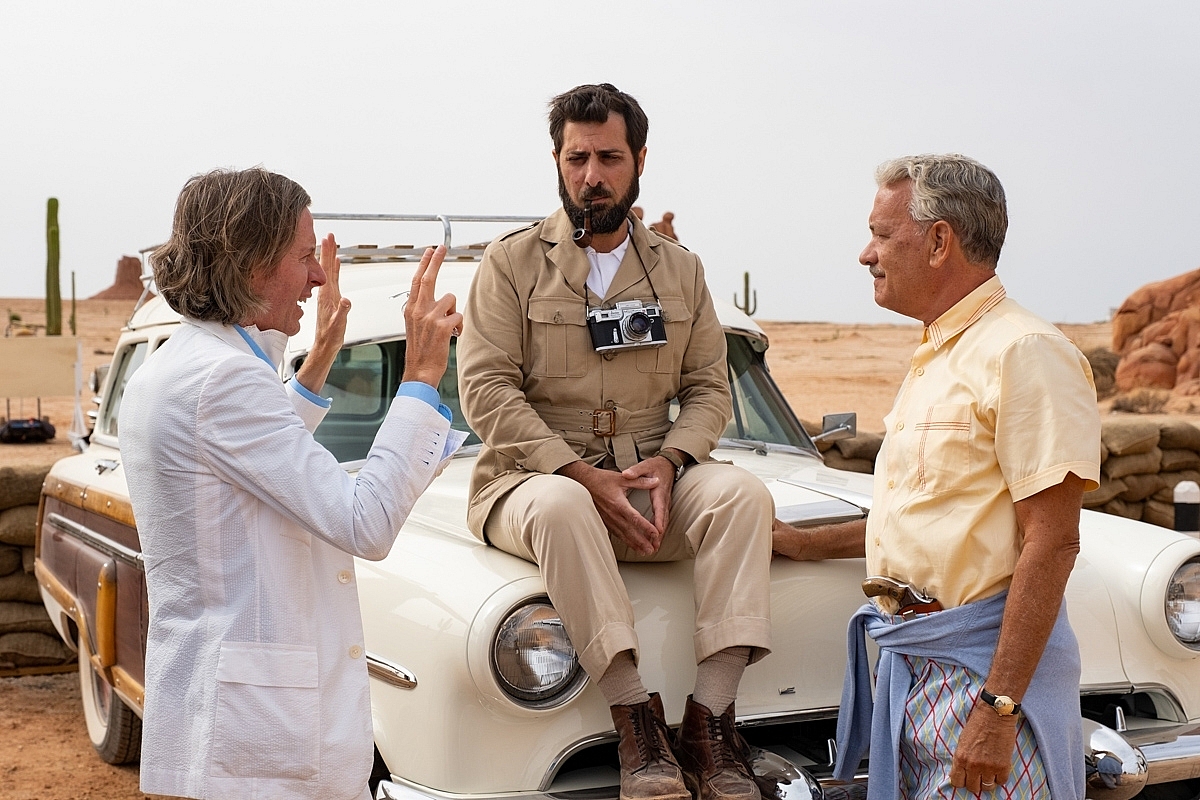
(L to R) Writer/director Wes Anderson, actor Jason Schwartzman and actor Tom Hanks on the set of ASTEROID CITY, a Focus Features release.
However, in Anderson's inimitable way, the story is more mind-boggling than that. Back east, the characters of Asteroid City are on stage, preparing a play called 'Asteroid City,' and the storytelling ventures behind the curtains as the theater actors polish their craft to become stars.
The film was directed and produced by Anderson from a story he developed with director/screenwriter Roman Coppola. It features an extensive ensemble cast of Hollywood heavyweights, including Scarlett Johansson, Tom Hanks, Jason Schwartzman, Matt Dillon, Maya Hawke, Steve Carell, Jeffrey Wright, Ed Norton, Margot Robbie and Jeff Goldblum.
Asteroid City represents Yeoman's eleventh long-form, live-action feature collaboration with Anderson, all shot on analog film, too. These include Bottle Rocket (1996), The Royal Tenenbaums (2001), The Darjeeling Limited (2007), Moonrise Kingdom (2012) and The French Dispatch (2021). Yeoman was Oscar and BAFTA-nominated for his work on Anderson's The Grand Budapest Hotel (2014), and he more recently shot 16mm film for The Wonderful Story of Henry Sugar set for release at the end of 2023.
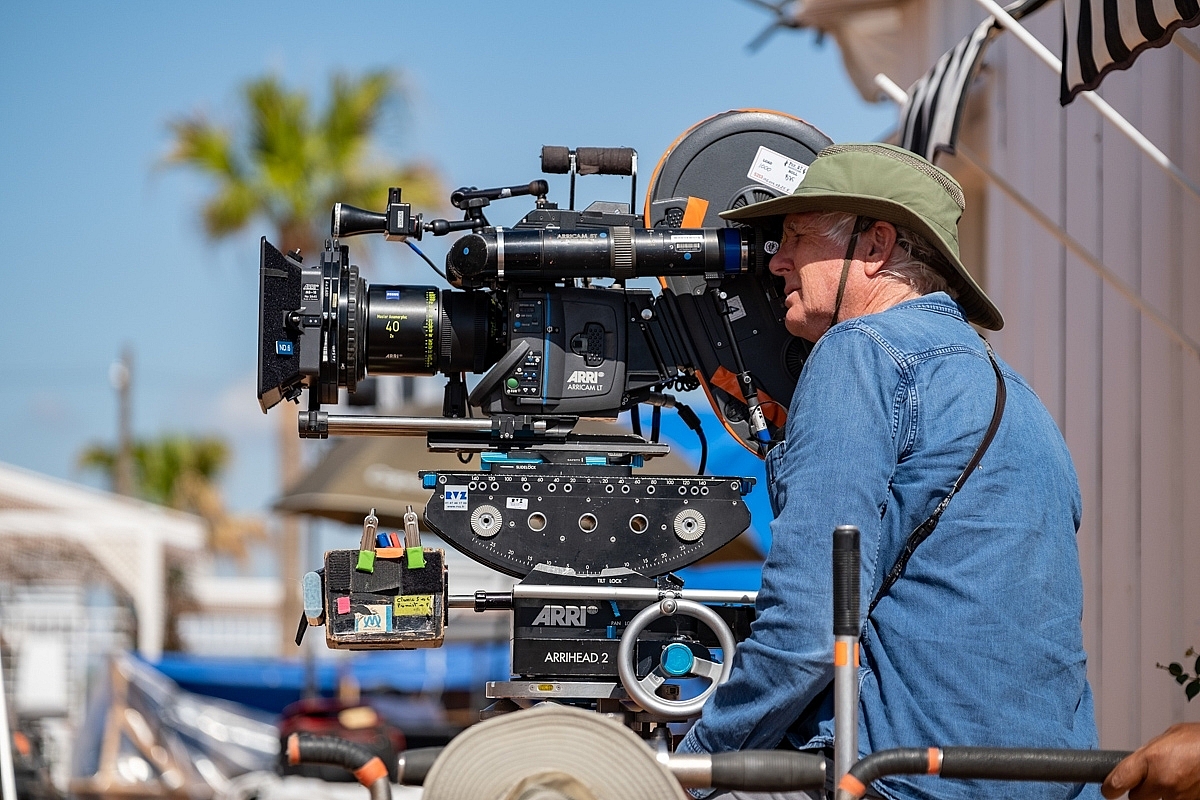
Director of photography Robert Yeoman on the set of writer/director Wes Anderson's ASTEROID CITY, a Focus Features release.
"Every film with Wes is a different experience. It's like embarking on an amazing adventure," says Yeoman. "The cast and department heads often live in the same hotel, as was the case with Asteroid City. So, we were a very tight-knit group going into this production, with a sense of togetherness, almost like a large family.
"As with all of the films I have shot for Wes, he assembled a library of DVDs and books that were visual references for what he wanted to achieve. And I immersed myself in these suggestions to see what had inspired him.
"On this film, Bad Day at Black Rock (1955, dir. John Sturges, DP William C. Mellor ASC) and Paris, Texas (2984, dir. Wim Wenders, DP Robby Müller NSC BVK) were two that I loved. They were not afraid to shoot in the harsh midday sun in the desert and actively used that as an expressive element in their stories. We visited every location during prep when we talked extensively about the shots and how best to achieve them. I also discussed a lighting plan with Wes and made sure that he knew what to expect."
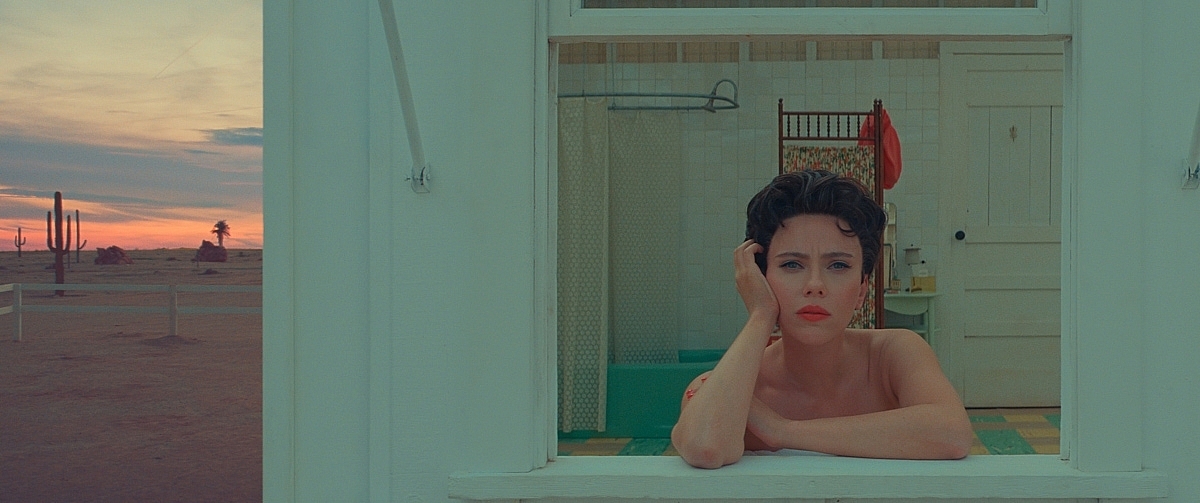
Scarlett Johansson in writer/director Wes Anderson's ASTEROID CITY, a Focus Features release.
Filming on Asteroid City took place in and around the town of Chinchón, Spain, over the course of 35 shooting days, commencing on August 30, 2021 and completing on October 15. Yeoman reveals that call times were generally at 8:30 a.m. with a daily wrap around 7 p.m. each evening. Prior to the shoot, Yeoman had five weeks of prep, although several scenes featuring Jason Schwartzman, Matt Dillon and some of the younger cast were filmed during this period due to availability.
Most of the sets were built on a large area of farmland leased by the production, where the art department built the entire town from scratch, including all the rock formations and cacti. Other locations were buildings found in Chinchón itself, which were modified and dressed appropriately for the story.
Yeoman shot Asteroid City using an ARRICAM ST 35mm film camera, variously framing the action in 1.37:1 aspect ratio using Cooke S4 lenses and 2.40:1 with ARRI Master Anamorphics.
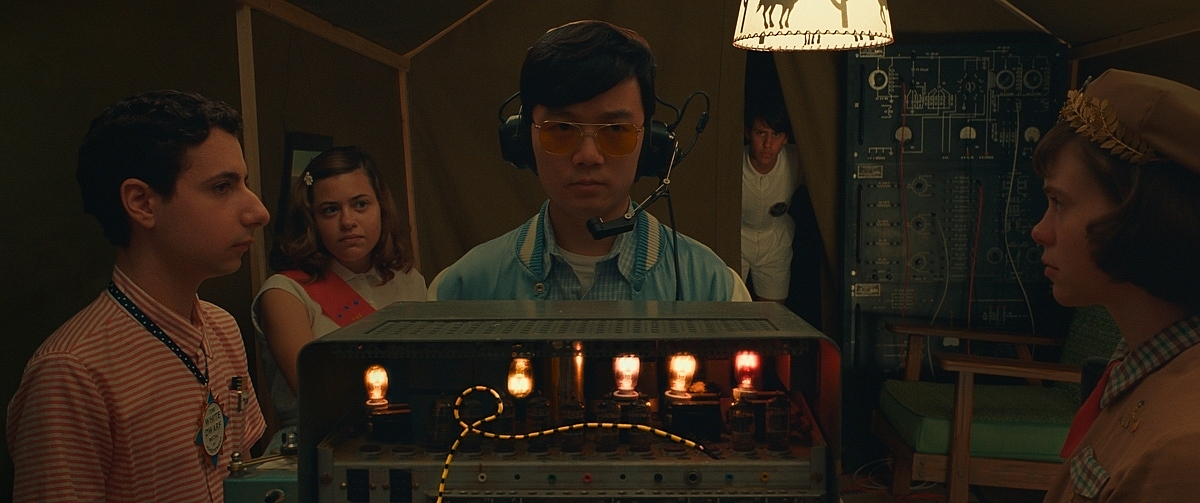
(L to R) Jake Ryan, Grace Edwards, Ethan Lee, Aristou Meehan, and Sophia Lillis in writer/director Wes Anderson's ASTEROID CITY, released by Focus Features.
"We shot 1.37:1 for the black and white sequences and 2.40:1 for the color, as we wanted both of these worlds in the film to have clear and distinctly different looks so that the audience would immediately know which part of narrative they were in," he says.
"I had used the Cooke S4s previously on The Grand Budapest Hotel and The French Dispatch, as I like how these lenses render faces and was very pleased with the overall look they gave. Wes often likes to use the full width of the frame in compositions with multiple actors, so I chose the ARRI Master Anamorphics for the color sequences as they hold focus with minimal distortion on the edges of the frame. I would hate to have an amazing performance look soft because the actor was not solely centered in the frame."
For the shoot, Yeoman utilized the same combination of 35mm films stocks he had deployed on The French Dispatch – namely KODAK VISION3 200T Color Negative Film 5213 for the movie's color sequences and EASTMAN DOUBLE-X Black & White Negative Film 5222 for the B&W scenes. Both stocks were used for interior/exterior and day/night scenes. The 35mm rushes were processed normally, without any push or pull processing, at film lab Hiventy in Paris, which then delivered 4K scans of the rushes to dailies colorist Doychin Margoevski at Company 3 in London. The final grade was done at the company by colorist Gareth Spensley.
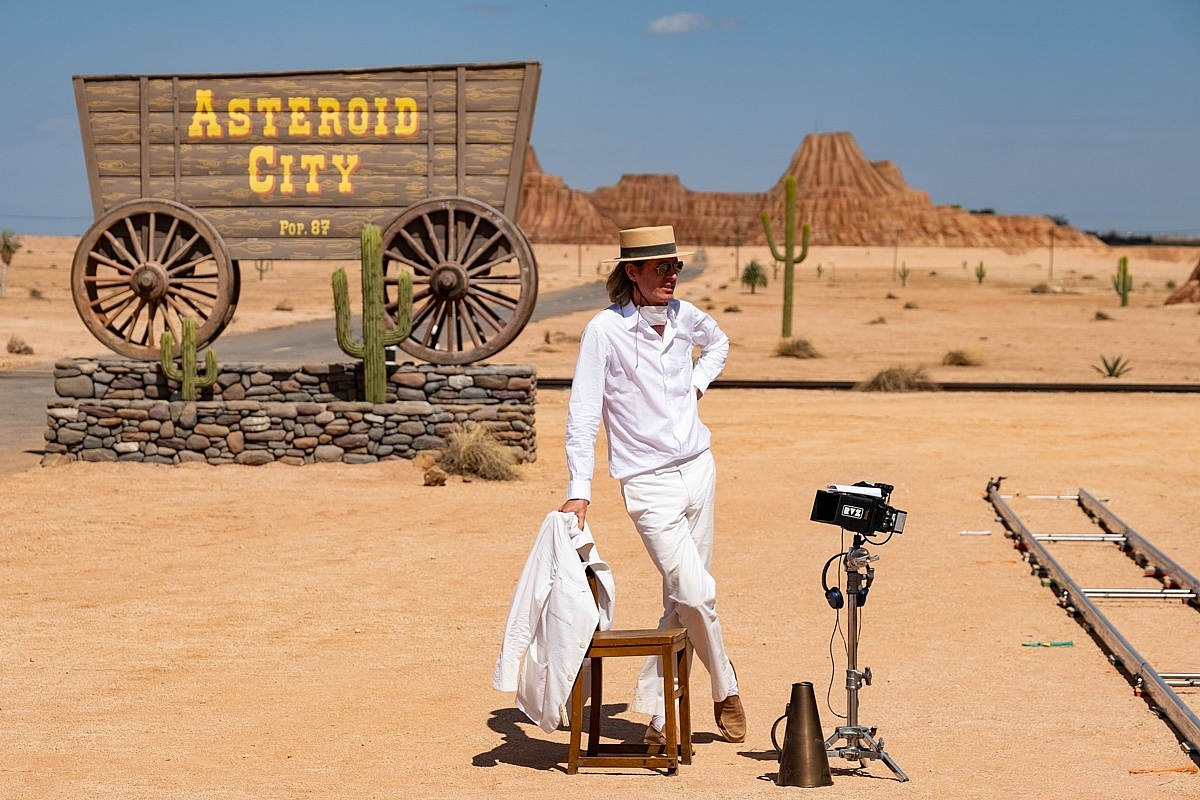
Writer/director Wes Anderson on the set of ASTEROID CITY, a Focus Features release.
"Wes prefers to shoot all of his live-action features on celluloid," Yeoman explains. "We both love the innate texture and color of the filmed image, which can be hard, sometimes impossible, to achieve digitally. Film grain was an important element for this production, particularly for the B&W scenes. Wes and I fell in love with the look of the DOUBLE X B&W stock on The French Dispatch, as it has a superb scale of tonal contrast and grain. Also, on this film we were essentially shooting in a desert with the sun overhead and a lot of contrast. I was concerned about the highlights burning, but I knew that both film stocks would hold detail in the image.
Yeoman says that while shooting on film gives Anderson the quality of the image he wants, the process of shooting is also much more to the director's preference.
"There is nothing like hearing the purr of film running through the gate, and everyone on set pays more attention to what they need to do when shooting film compared to digital," Yeoman relates. "All energies are focused on the shot and that gets magically translated onto the film negative. Also, Wes does not have a video village, and with a very small crew on set, that means we can move quickly between set-ups. Ultimately, shooting on film creates a more intimate atmosphere for the actors and there are a lot fewer distractions for them."
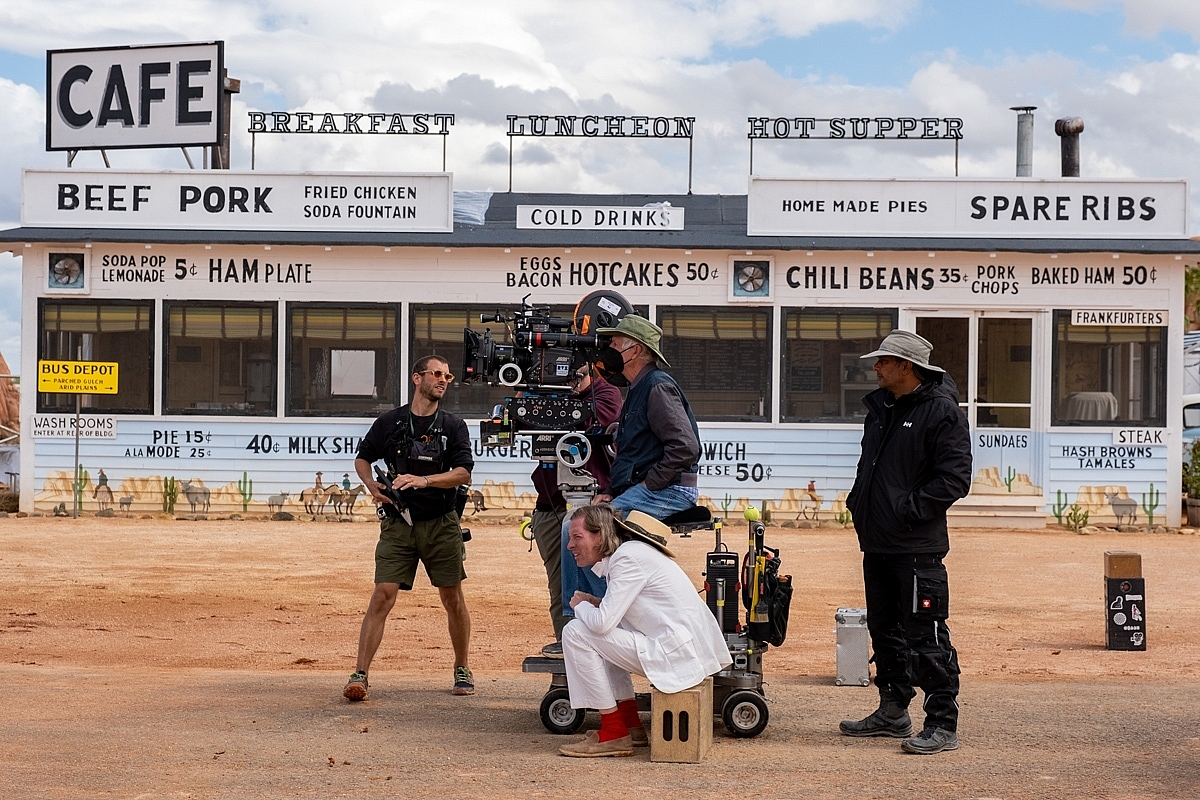
(L to R) Writer/director Wes Anderson and director of photography Robert Yeoman on the set ASTEROID CITY, a Focus Features release.
Yeoman operated the camera during what was a single-camera shoot. Vincent Scotet pulled-focus as the 1st AC, supported by 2nd AC Felix Terreyre Saint-Cast and loader Truman Hanks. The key grip was Sanjay Sami, who Yeoman and Anderson originally met on The Darjeeling Limited, and who brought a repertoire of dolly rigs to this production. The gaffer was Greg Fromentin, who had previously worked on The French Dispatch.
"Wes' films always push our technical and creative skills by constantly challenging us to find new ways to help him tell his story," Yeoman notes. "For example, Wes often likes to hold focus on an actor very close to camera and someone very distant, so it is a little tricky to hold these splits, but Vincent did an amazing job on focus. In fact, my camera crew were fantastic."
Regarding the motivation of the camera for storytelling purposes, Yeoman observes, "Wes makes an animatic of the entire movie before the shoot and we use this religiously as our guide. He is always specific about how the camera moves, and the timing of those moves is crucial, often determined by the dialogue. We frequently had to move quickly, but Sanjay and his grip team pulled these moves off every time.
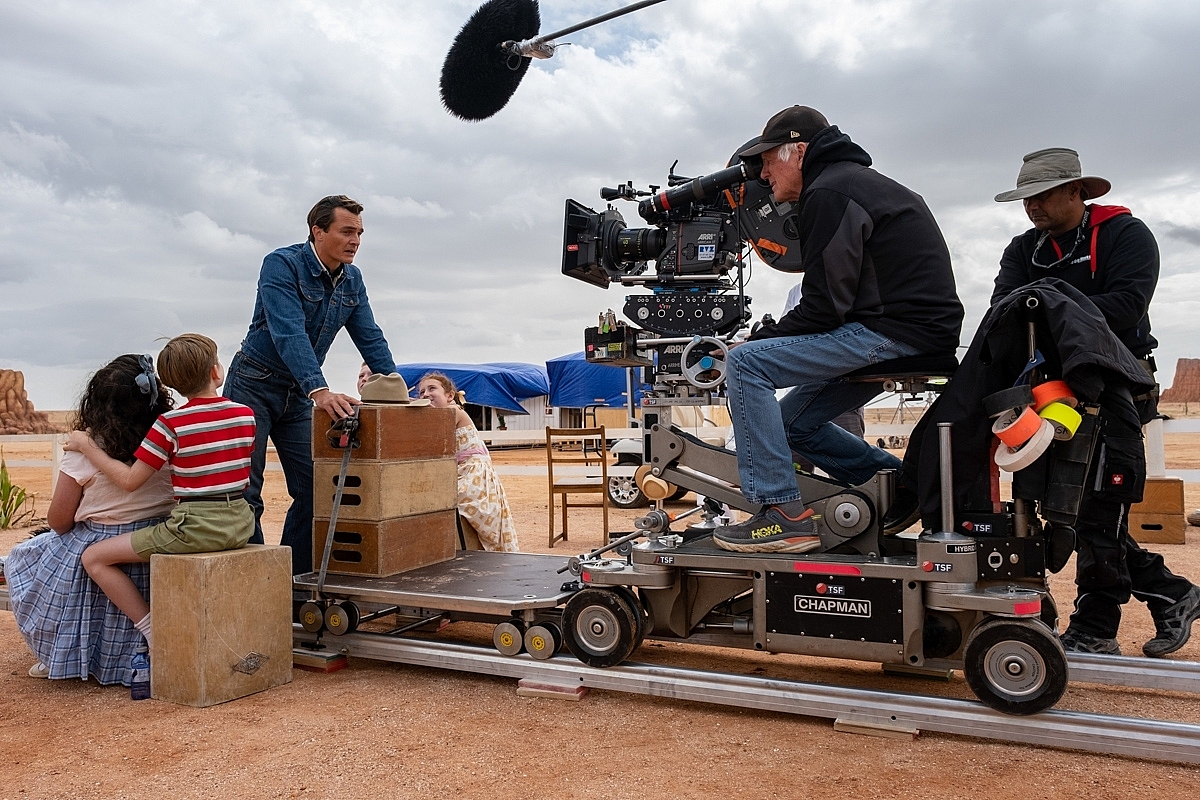
(L to R) Actor Rupert Friend and director of photography Robert Yeoman on the set of writer/director Wes Anderson's ASTEROID CITY, a Focus Features release.
"Our grip equipment was fairly standard dolly and track that enabled the camera to move laterally and in-and-out within the same shot depending on the move Wes had designed.
"He also planned some long exterior dolly shots that included several of our actors. However, because they were not all available at the same time, we knew we would have to go back and recreate the same track at a later date, before having those separate shots combined together in post to make one seamless move.
"We carefully marked the track so that we could exactly duplicate the shots later and planned our shots to match the sun angle as best as possible to help the blend. Unfortunately, we twice had major thunderstorms and the desert floor sank in several areas which meant we had to compensate for this change in the level of our shot. It was not an easy task!"
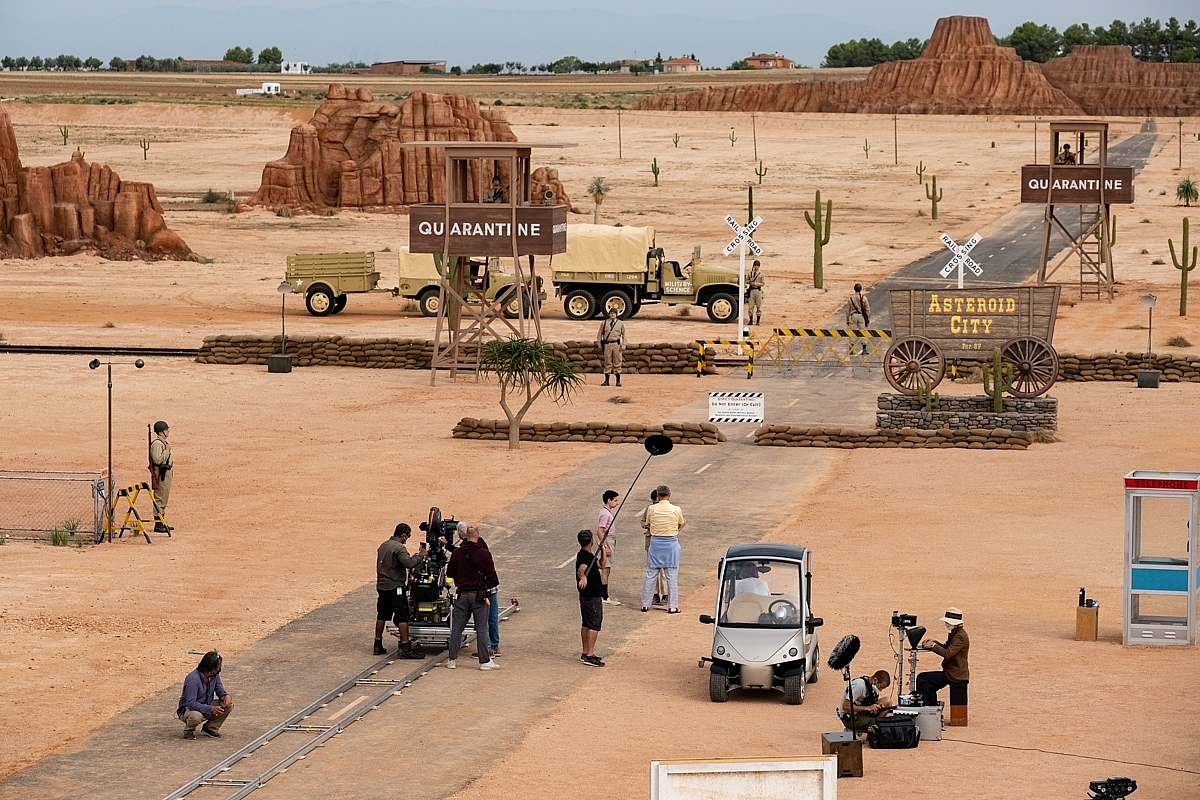
The crew working on the set of writer/director of Wes Anderson's ASTEROID CITY, a Focus Features release.
Yeoman says the lighting on Asteroid City was based around naturalism. "Greg and his lighting team were great. He knows how Wes likes to work and fits in nicely. We often pre-rigged some of our sets and they were always done perfectly.
"We really wanted a natural look, and no stylized lighting. Wes pushed me to embrace frontal and overhead sunlight, and the town exteriors were all shot in natural light. In the past I have always preferred to back- or side-light the actors, and if the light was overhead and harsh, would be inclined to silk it. But I don't think we ever used a silk in this film. We were sometimes at the mercy of the weather, but generally got clear, sunny days, which kept our lighting consistent throughout the day.
Yeoman adds, "When we built the town outside of Chinchón, we put skylights into all of the buildings where we planned to shoot the day interiors and relied on natural light, with no traditional movie lights, when we shot those scenes. We covered the skylights with full grid to give a soft, even light, which allowed the actors to move around with no lighting adjustments. It also meant that the interior and exterior shots balanced perfectly. The dusk scenes were all natural with practicals in the background to give a 'pop' to the image."
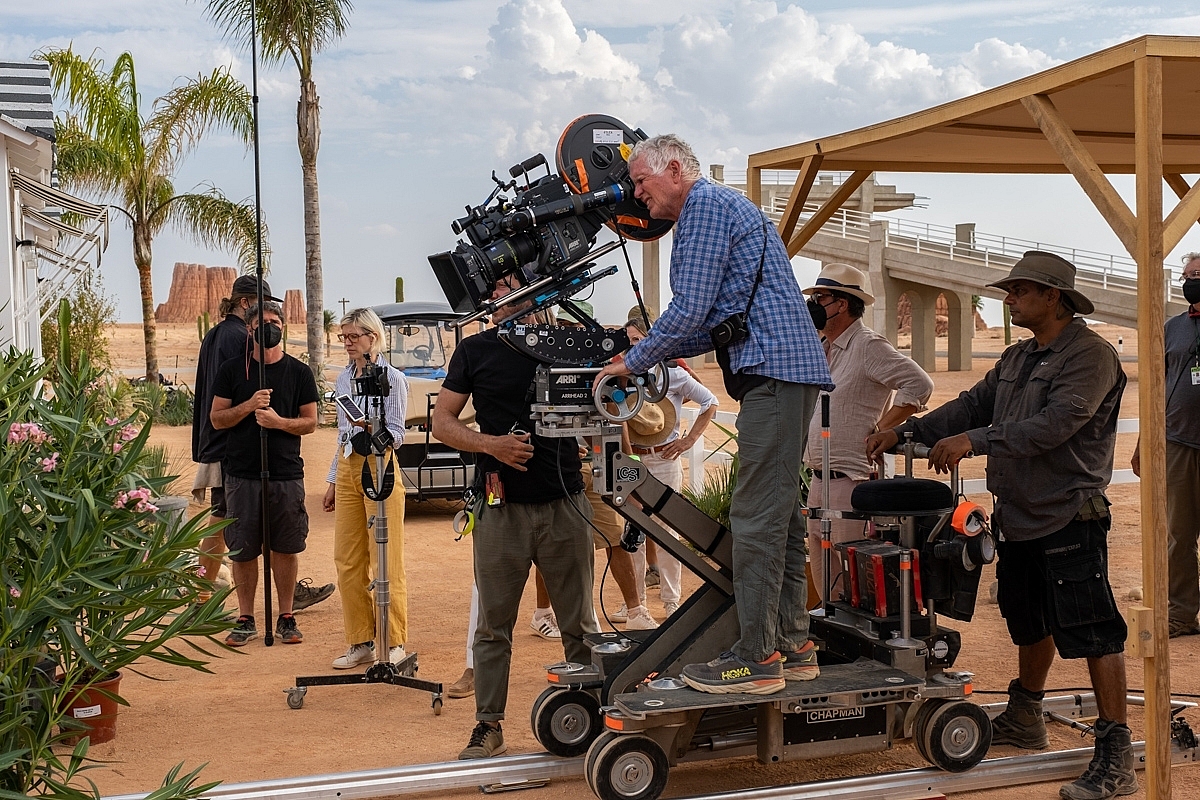
Director of photography Robert Yeoman on the set of writer/director Wes Anderson's ASTEROID CITY, a Focus Features release.
The B&W televised scenes in the film were, however, purposefully more stylized, and theater lighting director Matt Daw was brought in from London to create a different style of lighting. Yeoman says he worked closely with Daw to blend his theater lighting to the needs of shooting film and getting the necessary exposure and lighting ratios.
"We generally hung a grid of hard lights above the set on an overhead grid, like it would have been done in a television studio at that time," Yeoman relates, "and used a dimmer board to control them as the actors moved around the set. It is a different method of working from what I have been accustomed to, but I think in the end it worked out great."
Yeoman concludes, "It is not often that I get to work so closely with such an amazing cast and behind-the-scenes collaborators, and I always enjoy the creative challenges that Wes presents. The look and aesthetic feel of analog film is unique, and I am very proud of the results we achieved on Asteroid City."